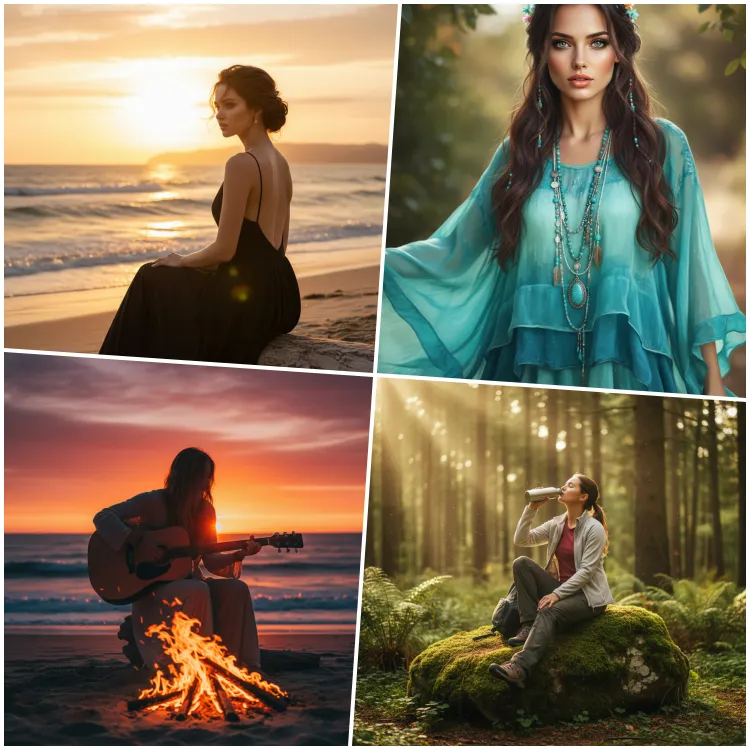The Anatomy of a Perfect AI Prompt: Turning Your Words into Art

In the world of AI art, your imagination is the only limit. But how do you translate the complex, beautiful image in your mind into a language that an AI like Midjourney or DALL-E 3 can understand and execute flawlessly? The answer lies in mastering the anatomy of a perfect prompt.
Think of a prompt not as a single command, but as a detailed recipe. Each component you add brings you closer to your desired result. Let's break down the essential building blocks that transform a simple idea into a stunning work of art.
1. The Core Subject: The "What"
This is the foundation of your image. Be clear and concise, but don't be afraid to be specific. The more detail you provide about your subject, the better the AI can interpret it.
- Simple:
a man - Better:
a rugged, elderly fisherman with a weathered face and a thick white beard
The second example instantly gives the AI a character to build upon, filled with implied story and texture.
2. The Style & Medium: The "How"
This is where you define the entire aesthetic of your image. Do you want a photo, a painting, or something else entirely? This component is crucial for setting the mood.
- Photography:
cinematic photo, fashion editorial, wildlife photography, long exposure - Art Mediums:
oil painting, watercolor sketch, detailed charcoal drawing, Japanese ink wash painting - Art Styles:
impressionism, cubism, art nouveau, vaporwave aesthetic, anime key visual
Combining a subject with a style is the first major step: a rugged fisherman, oil painting.
3. The Artist & Influence: The "Who"
To quickly adopt a very specific aesthetic, you can reference the style of famous artists, directors, or even studios. The AI has been trained on countless images and understands these references.
- Artists:
in the style of Vincent van Gogh, inspired by Rembrandt, art by Alphonse Mucha - Directors:
cinematic shot by Wes Anderson, directed by Quentin Tarantino, style of Denis Villeneuve - Studios:
Studio Ghibli aesthetic, Pixar animation style
Example: a rugged fisherman, oil painting, in the style of Rembrandt.
4. The Technical Details: The "With What"
This is where you take on the role of a director of photography. Specifying camera, lens, and film details adds an incredible layer of realism and control, especially for photographic styles.
- Camera & Lens:
shot on a Leica M6, 85mm f/1.4 lens, captured with a Sony a7 III - Film Stock:
Kodak Portra 400, Fuji Superia, cinematic film stock, black and white Ilford HP5 - Lighting:
cinematic lighting, dramatic rim lighting, soft morning light, neon noir glow
Example: a rugged fisherman, in the style of Rembrandt, cinematic lighting, shot on Kodak Portra 400.
5. The Final Polish: Mood, Color & Composition
These are the finishing touches that tie everything together and infuse your image with emotion.
- Mood:
serene, melancholic, joyful, mysterious, powerful - Color Palette:
vibrant pastel colors, muted earthy tones, monochrome, neon accents - Composition:
wide-angle shot, low-angle, extreme close-up, rule of thirds
Putting It All Together: Your Final Prompt
By combining these components, you create a powerful, detailed instruction set for the AI.
Final Prompt: cinematic photo of a rugged, elderly fisherman with a weathered face and a thick white beard, in the style of Rembrandt, dramatic rim lighting, melancholic mood, shot on a Leica M6 with Kodak Portra 400 film, hyper-detailed
Mastering this structure is the key to unlocking consistent, high-quality results. Ready to see these principles in action? Explore our free prompt library to see how we use these components to create thousands of stunning images. Each prompt is a mini-lesson in itself!